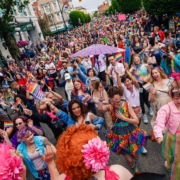In the Community – Here Magazine
In the Community – Here Magazine
August 1, 2020
Discussing Race in Victoria’s LGBTQ2+ Community
By Victoria Pride Contributing Writer
During Victoria Pride Week, Here Magazine, a local not-for-profit focused on issues faced by immigrants, hosted a discussion on race and the queer community. Facilitated by Sergio L. Ramos, the event covered a variety of topics affecting LGBTQ2S+ people of colour and was well received.
“We talked about some of the biases that people have against people of colour and the intersection of being a part of the community and a part of one of those groups – Brown, Black or Asian,” says Ramos. “We need to be having these conversations in the community and in places of work. It’s not very easy to open these conversations because Victoria is a very white city. It’s not like Toronto or Vancouver which are very multicultural cities. People here in Victoria can be very racist and just say “I’m not into Latino, I’m not into Asian, I’m not into Black people.”
Recognizing Privilege
People of colour have often not been included by the mainstream queer community. As an example, after the Stonewall Riots in New York, several trans people of colour were asked to not participate in pride in order to make the event more “palatable.” In addition, portrayals of queer people and queer experiences have often focused on white cis men and have left out those who face multiple forms of discrimination like sexism, racism and transphobia. Many feel that not enough is being done to uplift those who face greater discrimination.
“We try to encourage white folks to understand that they have privilege. White folks in the community do face some glass ceilings, but the problem is that even white people don’t realize that they have privileges which they could use to help to help other people with more intersection to overcome.”
Ramos says that most people in the community are aware of this and many talk a good game. But a huge problem is that many people’s discourse and narratives don’t match their actions.
“The challenge is for everyone to realize their own privileges, their own biases, and work to deconstruct them. I’m brown, I am mixed, and I also have biases. It’s very hard to realize and identify those biases and try to work on them and accept everyone,” he says. “Once you realize that you have biases and are perpetuating racism, if you realize that and don’t do anything, that’s a problem.”
Creating Space
While many look to legislation as a solution to issues regarding race, that is not the only component that needs to be put in place to facilitate change. Ramos believes that gaining space in communities at the local level and having these discussions about bias and privilege are the first steps towards making greater change.
“I think we need to first organize ourselves in order to gain more spaces. Once we gain those places in our communities, in our neighbourhoods, in our workplaces, then we could gain representations within the community and look for change. It’s easier to achieve change at the local level government than on the federal level.”
Despite the obstacles, Ramos is hopeful. Discussions like this one are being had across the country and a lot of good change is happening.
“I want to recognize the work that Vancouver Pride Society is doing, they’re opening their doors to being a more inclusive place and more diverse space for people, and I think several not-for-profits like Here Magazine are working on the same track. I’m very happy for all this work.”


